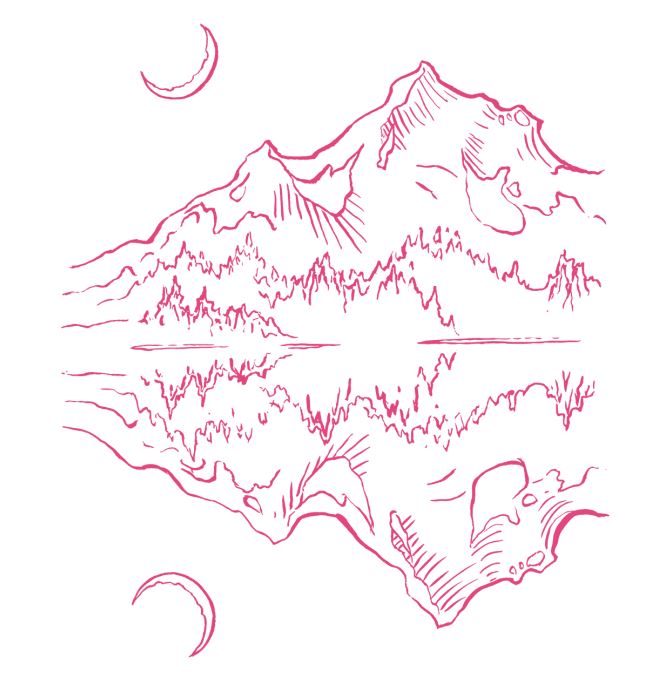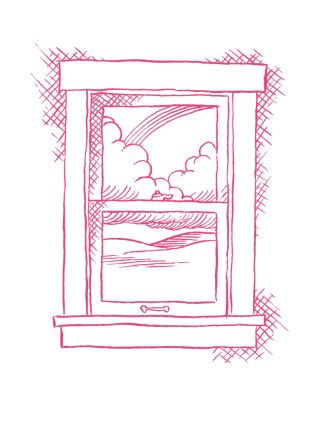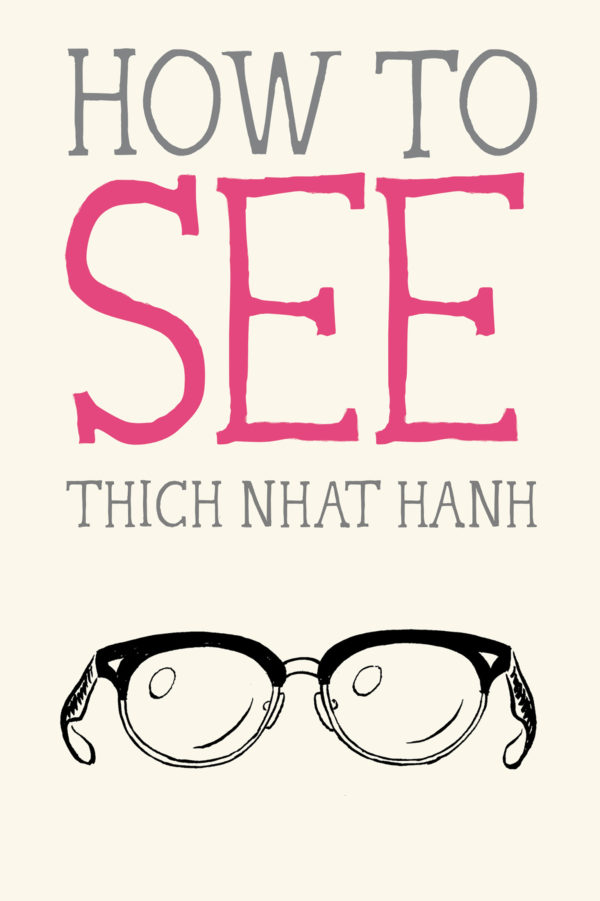If you are a poet, you will see clearly that there is a cloud floating in this sheet of paper. Without the cloud there can be no rain; without water, the trees cannot grow; and without trees, you cannot make paper. So the cloud is in here. The existence of this page is dependent upon the existence of a cloud. Paper and cloud are so close.
Water reflecting
The clear still water of a mountain lake reflects the mountain and the sky with pristine clarity. You can do the same. If you are calm and still enough, you can reflect the mountain, the blue sky, and the moon exactly as they are. You reflect whatever you see just as it is, without distorting anything.
River of perceptions

In each of us there is a river of perceptions. Perceptions arise, stay for a period of time, and cease to be. When our mind is not calm, we do not see clearly. Like the surface of a lake on a windy day, the image we see is distorted. Our perceptions are often erroneous, and cause us to suffer and cause others to suffer. It is very helpful to look deeply into the nature of our perceptions, without being too sure of anything. When we are too sure, we suffer. When we ask ourselves, “Are you sure?” we have a chance to look again and see if our perception is correct or not.
Sign or reality?
We are convinced that our perceptions are correct and complete, yet often they are not. In the Chinese character for perception, the upper part is “sign” or “appearance,” and the lower part is “mind.” When we perceive something, an image of that thing—a sign—is created in our mind, and in many cases that sign is illusory. It is very easy to confuse our mental image of something with its reality. It is important not to be too sure of our perceptions.
Seeing the true nature of things
The practice of full awareness is to look deeply in order to see the true nature of things and go beyond our inaccurate perceptions. Seeing a rope as a snake, we may cry out in fear. Fear is a feeling brought about as a result of our wrong perception. Our perceptions are often inaccurate and can bring about strong feelings and reactions and cause much unnecessary suffering. Once we have seen the true nature of the object of our fear, our fear will vanish.
The source of our perceptions
The source of perception, our way of seeing, lies in our unconscious mind. Most of our perceptions are erroneous. They carry with them all the errors of subjectivity. We praise or blame, are happy or complain depending on our perceptions. Our perceptions are made of many things, including our afflictions, such as craving, anger, and ignorance, as well as our habit energies and past experiences. Whether we are happy or whether we suffer depends largely on our perceptions. It is important to look deeply into our perceptions and recognize their source.
Good or bad luck?
One day a farmer went to the field and found that his horse had run away. The people in the village said, “Oh, what bad luck!” The next day the horse returned with two other horses and the village people said, “What good fortune!” Then the farmer’s son was thrown from one of the horses and broke his leg. The villagers expressed their sympathy, “How unfortunate.” Soon after, a war broke out and young men from the village were being drafted. But because the farmer’s son had a broken leg, he was the only one not drafted. Now the village people told the farmer that his son’s broken leg was really “good luck.” It is not possible to judge any event as simply fortunate or unfortunate, good or bad, as this age-old story shows. You must travel throughout all of time and space to know the true impact of any event. Every success contains some difficulties, and every failure contributes to increased wisdom or future success. Every event is both fortunate and unfortunate. Fortunate and unfortunate, good and bad, these concepts exist only in our perceptions.
Doubt
Doubt can be helpful. If you don’t doubt, you have no chance to discover the true nature of what is. According to Zen Buddhism, the greater your doubt, the greater will be your enlightenment. So doubt can be a good thing. If you are too sure, if you always have conviction, then you may be caught in your wrong perception for a long time.
Seeing beyond labels
Sometimes people have a certain idea or way of looking at things, and they want to put you in a box. But what happens if you don’t belong in any of their categories? It’s the reality of the thing that matters, and not the word we use to describe it. A name is merely a conventional designation, it’s not the reality in itself. We must train ourselves to look at each other beyond labels to see each other’s true nature.
Looking without seeing

A tree reveals itself to an artist only when the artist can establish a relationship with the tree. If we are not fully ourselves, fully human, we may look at our fellow humans without truly seeing them, just as we may look at a tree and not truly see it. When we are in touch with ourselves, we know how to live in such a way that a beautiful future for the world is possible. The question “Is a human future possible?” is meaningless if we can’t see the millions of fellow human beings who are suffering, living, loving and dying around us. Only when we come home to ourselves and get in touch with ourselves can we really see ourselves and others and be in touch with the world around us.
Seeing reality as a whole
We distinguish between blossoms, leaves, and the tree that is the basis of their existence; but in reality, they are one. The same is true of humanity and nature. In Chinese ink paintings, much space is always given to nature, and human beings are included as a part of nature. There are many traditions of humankind that encourage us to look at reality as a whole rather than to cut it into separate entities.
Truly seeing
The practice of looking deeply helps us and the people around us to wake up to the fact that we have a beautiful planet that needs our protection. That is why enlightenment, awakening, is very important. If we live mindfully in everyday life, walk mindfully, are full of love and caring, then we create a miracle and transform the world into a wonderful place. Every one of us has the seed of awakening in us, and that is why we are hopeful. Everything we do should be aimed at bringing about collective awakening.

➛ How to See is part of a series of titles by Zen Master Thich Nhat Hanh that both introduces beginners to mindfulness and reminds seasoned practitioners of the practice’s essentials. First published in 2017 by Parallax Press, it comprises brief meditations to help readers focus on perceptions and challenging situations, accompanied by sumi ink drawings by Jason DeAntonis. Other topics include how misperceptions develop, ways to gain insight, and how mindfulness practices can help us see ourselves, each other, and the world around us more clearly. The post above is a selection of excerpts.

Beautiful truth … I aspire to learn more, then perhaps I’ll understand more, and can Be more.